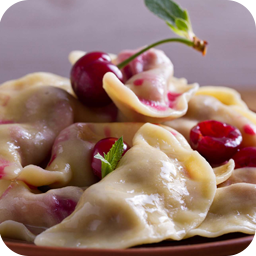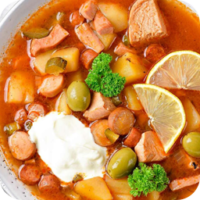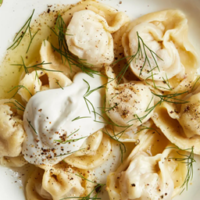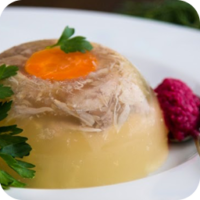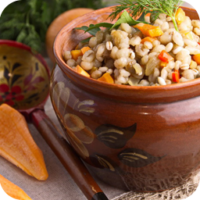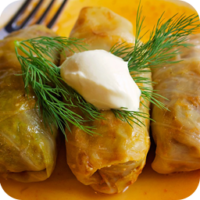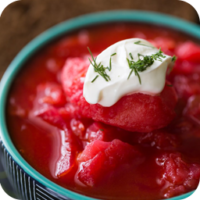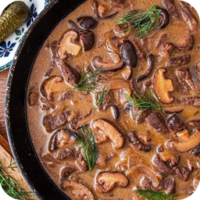Vareniki (вареники) are a traditional Russian dish, often referred to as dumplings. They are made by filling dough with various fillings such as potatoes, cottage cheese, meat, mushrooms, fruit, or berries, and then boiling them. Vareniki are similar to pierogi from Poland and other Eastern European dumplings but have their own distinct characteristics and filling varieties. These dumplings are commonly served with sour cream or butter and are often enjoyed as a main dish, side dish, or even dessert.
Key Ingredients:
- Dough:
- The dough is made from flour, water, eggs, and salt, resulting in a smooth and elastic texture that can hold various fillings.
- Fillings:
- Savory Fillings:
- Potatoes (often mashed and mixed with onions, butter, or cheese), cottage cheese (tvorog), or meat (beef, pork, or chicken) are popular savory options.
- Sweet Fillings:
- Cherries, blueberries, apples, or strawberries are used for a sweet version of vareniki, often served with sugar or sour cream on the side.
- Savory Fillings:
- Serving:
- Vareniki are typically served with sour cream or butter, and sometimes garnished with fried onions or crispy bacon bits for extra flavor.
Flavor Profile:
- Savory versions have a rich, comforting flavor from ingredients like mashed potatoes or tender meat, while the sweet versions have a fresh, fruity flavor, often with a balance of tartness from the fruit and sweetness from sugar or honey.
How It’s Made:
- Prepare the Dough:
- The dough is kneaded until smooth, then rolled out thinly on a floured surface.
- Prepare the Filling:
- For savory vareniki, fillings like mashed potatoes, sautéed onions, and cottage cheese are mixed together. For sweet versions, fresh fruit is prepared, and sugar or sweetener is added.
- Form the Dumplings:
- The dough is cut into small rounds, and a spoonful of filling is placed in the center. The edges are then folded over to create a half-moon shape, and the edges are pressed together to seal.
- Boil the Dumplings:
- The vareniki are boiled in salted water until they float to the surface, which usually takes about 5-7 minutes.
- Serving:
- Once cooked, vareniki are typically served with sour cream, butter, or a sprinkling of sugar for sweet versions.
Cultural Significance:
- Vareniki are considered a comfort food in Russian and other Eastern European cuisines and are a staple in many households.
- They are commonly made for holidays, family gatherings, or celebrations, and each family may have their own variation of fillings.
- In some regions, vareniki are made for special occasions such as weddings, where the number of dumplings prepared can be symbolic of prosperity and happiness.
Variations:
- Meat Vareniki:
- Filled with ground beef, pork, or chicken mixed with onions, spices, and sometimes rice or mushrooms.
- Sweet Vareniki:
- Fruits like cherries, apples, or berries are used for a sweet filling, often served as a dessert or with tea.
- Vareniki with Sauerkraut:
- A savory version filled with sauerkraut, providing a sour, tangy flavor that pairs well with the soft dough.
Health Benefits:
- Varied nutrition depending on the filling: savory versions with potatoes or meat provide protein and carbs, while sweet fillings offer vitamins and antioxidants from fruit.
- Homemade vareniki can be made with whole-grain flour or other healthy alternatives for those looking to modify the recipe.

